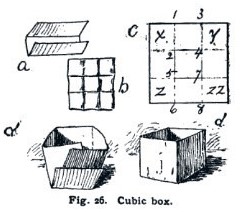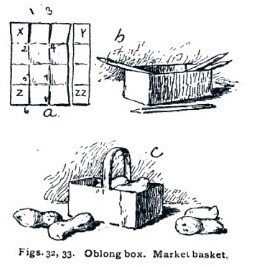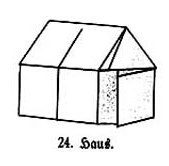| The Public Paperfolding History Project
Last updated 30/4/2024 x |
|||||||
| Paper Sloyd | |||||||
This page is being used to collect information about the educational style of paperfolding known as Paper Sloyd. Please contact me if you know any of this information is incorrect or if you have any other information that should be added. Thank you. Paper Sloyd is partivularly characterised by the use of designs which are created from squares or rectangles by means of slits cut into the edges of the paper, which is then folded up and glued together to create a box or other useful shape. Early designs of this kind are being recorded on this page whether or not they appear in publications which specifically refer to them as Paper Sloyd designs. ********** 1892 'The Prang Primary Course in Art Education: Part 1: The First Primary Year' by Mary Dana Hicks and Josephine C Locke, which was published by the Prang Educational Company in Boston in 1892, contains several Paper Sloyd stye designs, although the words 'Paper Sloyd' do not appear in the book. Cubic Box (Cut)
*** Oblong Box / Market Basket (Cut)
*** Card Tray (Cut)
********** 1910 A 'Haus' made by the Paper Sloyd technique appears in Part 2 'Das Flechten' of 'Die Frobelschen Beschaftigungen' by Marie Muller-Wunderlich, which was published by Friedrich Brandstetter in Leipzig in 1910.
********** 1961 'Wir Falten' by Joachim Schönherr and Gerta Schumann, which was published by Rudolf Arnold Verlag in Leipzig in 1961, contains instructions for making a series of building using the Paper Sloyd technique. ********** |
|||||||






